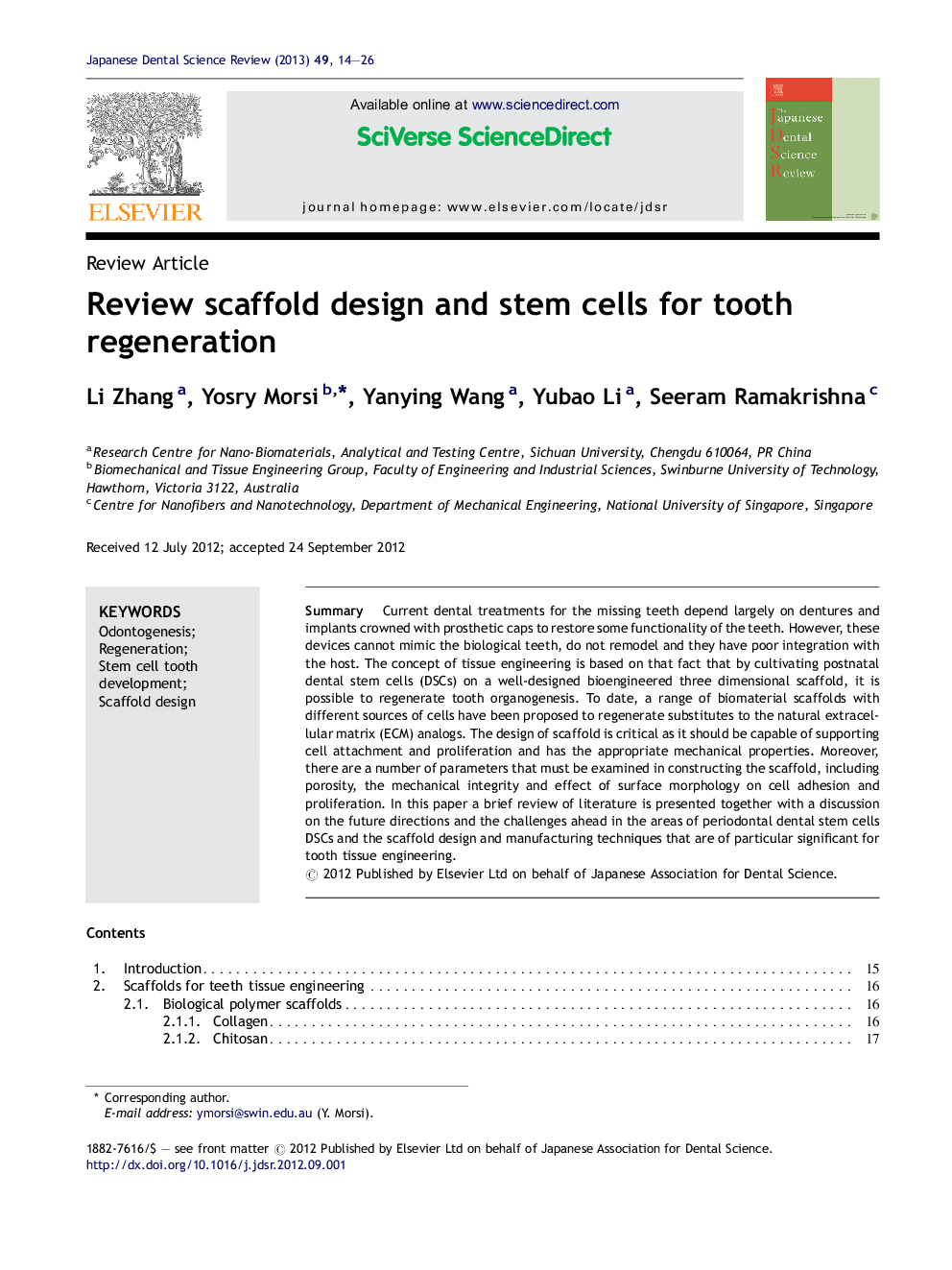| Article ID | Journal | Published Year | Pages | File Type |
|---|---|---|---|---|
| 3136832 | Japanese Dental Science Review | 2013 | 13 Pages |
SummaryCurrent dental treatments for the missing teeth depend largely on dentures and implants crowned with prosthetic caps to restore some functionality of the teeth. However, these devices cannot mimic the biological teeth, do not remodel and they have poor integration with the host. The concept of tissue engineering is based on that fact that by cultivating postnatal dental stem cells (DSCs) on a well-designed bioengineered three dimensional scaffold, it is possible to regenerate tooth organogenesis. To date, a range of biomaterial scaffolds with different sources of cells have been proposed to regenerate substitutes to the natural extracellular matrix (ECM) analogs. The design of scaffold is critical as it should be capable of supporting cell attachment and proliferation and has the appropriate mechanical properties. Moreover, there are a number of parameters that must be examined in constructing the scaffold, including porosity, the mechanical integrity and effect of surface morphology on cell adhesion and proliferation. In this paper a brief review of literature is presented together with a discussion on the future directions and the challenges ahead in the areas of periodontal dental stem cells DSCs and the scaffold design and manufacturing techniques that are of particular significant for tooth tissue engineering.
